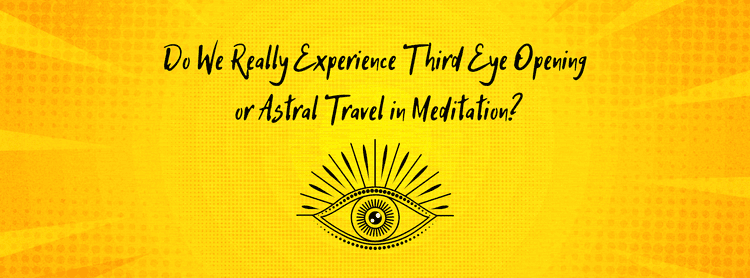Do We Really Experience Third Eye Opening or Astral Travel in Meditation

Many seekers ask: Is the third eye real? Can we truly leave the body during meditation? These questions aren’t just mystical—they’re rooted in centuries of spiritual practice and now, increasingly, in scientific curiosity.
Let’s explore what ancient wisdom and modern research say about these profound experiences.
The Third Eye: Gateway to Inner Vision
In yogic tradition, the third eye is known as the Ajna Chakra, located between the eyebrows. It’s said to govern intuition, inner sight, and higher perception. But what does science say?
What research shows
- The pineal gland is sensitive to light and may influence circadian rhythms and altered states.
- Some researchers (e.g., Rick Strassman) hypothesize that it could produce DMT, a molecule associated with mystical experiences — though this is still debated and not conclusively proven.
- Dr. Joe Dispenza and others suggest that specific breathing and meditation practices can stimulate cerebrospinal fluid flow, activating the pineal gland and creating heightened awareness. These ideas are intriguing but remain scientific hypotheses, not facts.
Modern neuroscience links the third eye to the pineal gland—a tiny, light-sensitive organ deep in the brain. French philosopher René Descartes called it the “seat of the soul.” This gland produces melatonin, which regulates sleep, and may also be involved in altered states of consciousness.
Astral Travel: Out-of-Body Experiences (OBEs)
- Traditional view: Many cultures describe astral projection as the soul or consciousness leaving the body and traveling independently. Practitioners report floating sensations, seeing their body from above, or exploring non-physical realms.
- Scientific view: Neurology explains some OBEs as brain-based phenomena — disturbances in the temporo-parietal junction can create a sense of leaving the body.
- Meditation link: EEG studies show that deep meditation can induce theta and delta brain states, which resemble dream or hypnagogic states where OBEs are more likely to be reported.
While science does not prove that the soul literally leaves the body, it recognizes that people consistently experience OBEs — and these experiences can be profoundly meaningful, leading to reduced fear of death and greater sense of connectedness.
What Does This Mean for You as a Meditator?
- Real, but subjective: Third eye visions and astral travel are genuine experiences for many practitioners. Whether they are “outer journeys” or inner brain–mind events, they carry real transformative power.
- Not the goal: Yogic teachings caution: don’t chase phenomena. Meditation is not about visions, powers, or “leaving the body.” These experiences may happen naturally, but the essence of meditation is awareness, stillness, and self-realization.
- Different for everyone: Some experience visions early, others never do, yet still grow deeply in peace, clarity, and compassion. Like flowers, inner experiences bloom in their own time.